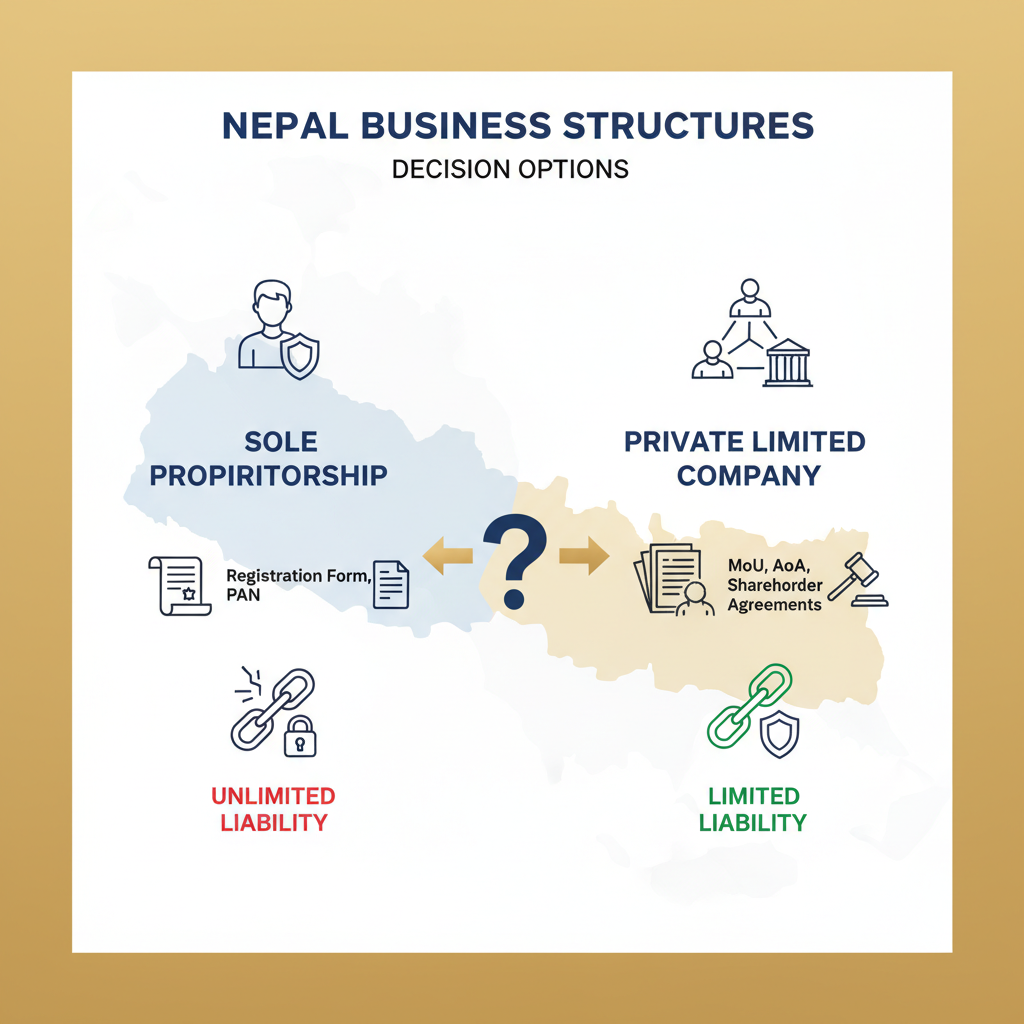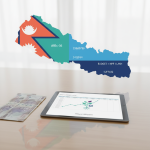Registering a Company in Nepal: A Simple 2026 Walkthrough
Does the thought of navigating the Office of the Company Registrar (OCR) make you feel overwhelmed? You are certainly not alone. Many aspiring entrepreneurs in Nepal delay their dreams simply because the paperwork feels too complicated. However, getting your business legally recognized is the single most important step to building trust with customers and protecting your personal assets.
This guide cuts through the bureaucratic noise to give you a clear, actionable roadmap. By the end of this post, you will know exactly what documents you need, where to go, and how to get your company up and running without unnecessary headaches.
Decide Your Business Structure First

Before you visit any government website, you must decide on the type of legal entity you want to form. In Nepal, the two most common forms for new businesses are Sole Proprietorships and Private Limited Companies.
- Sole Proprietorship (Private Firm): This is the simplest form. It is registered under the Department of Commerce or local ward office. However, you have unlimited liability, meaning your personal assets are at risk if the business fails.
- Private Limited Company (Pvt. Ltd.): This is registered with the OCR. It treats your business as a separate legal entity. Your liability is limited to your share capital, offering you better protection. Most startups prefer this route for scalability.
Checklist: What You Need to Prepare

Preparation is half the battle. Gathering these documents beforehand will save you from multiple trips to the administrative offices.
- Unique Company Name: You cannot use a name that is already taken. It is wise to have two or three variations ready.
- Citizenship Certificate: A notarized copy of the citizenship of all shareholders or proprietors.
- Passport Photos: Recent passport-sized photographs of all applicants.
- Articles and Memorandum of Association (AOA & MOA): These are legal documents outlining your company objectives and rules. For a Pvt. Ltd., these must be drafted carefully.
- Application Fee: The registration cost depends on your company’s authorized capital.
The Step-by-Step Registration Process

Once your documents are ready, follow this logical flow to complete the process efficiently.
1. Name Reservation at OCR
Visit the OCR website to check name availability. Once you find a unique name, reserve it online. This ensures no one else takes your brand name while you prepare your papers.
2. Document Submission
Upload your scanned AOA, MOA, and citizenship documents to the OCR portal. If everything is in order, the officers will verify your application. You may need to visit the OCR office physically to verify original documents.
3. Pay the Government Fee
After verification, you must deposit the registration fee at the designated bank. The fee structure varies; for example, authorized capital up to NPR 100,000 has a minimal fee, while higher capital incurs higher costs.
4. Issuance of Certificate
Once payment is confirmed, the OCR issues your Company Registration Certificate. This is your business’s birth certificate. Keep it safe.
5. PAN or VAT Registration
Registering with the OCR is not enough. You must also visit the Inland Revenue Department (IRD) to get your Permanent Account Number (PAN). If your annual turnover is expected to exceed the government threshold, or if you are in a service industry, you generally need to register for VAT as well.
What Happens After Registration?
Congratulations! You are now the owner of a legal entity. Now the focus shifts from paperwork to growth. You need to establish a brand identity that people trust instantly.
Prime IT Sewa understands startup struggles and serves as a one-stop solution for digital setup, helping with professional branding, websites, and automation so you can focus on scaling. Getting the legal side done is just the beginning; building a system that sells is next.
Frequently Asked Questions
Can a single person register a Pvt. Ltd. company?
Yes, a single shareholder can register a Private Limited company in Nepal. This is known as a Single Shareholder Company.
How long does the entire process take?
If all your documents are correct and the online system is working smoothly, you can typically complete the registration within 3 to 7 working days.
Do I need a physical office address?
Yes, you need to provide a location map and specific address of your registered office layout during the application process.
Final Thoughts
Registering a company in Nepal is a sign that you are serious about your vision. While the process involves several steps, taking them one by one ensures you build a verified foundation for your future success. Do not let the fear of compliance stop you; start gathering your documents today.











